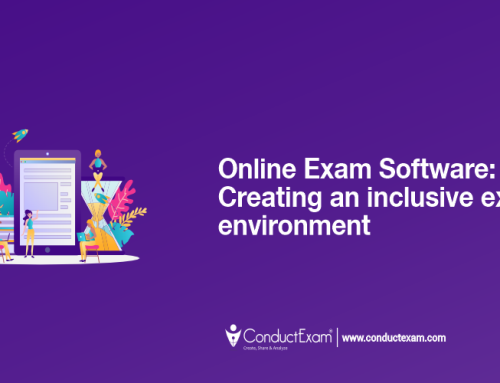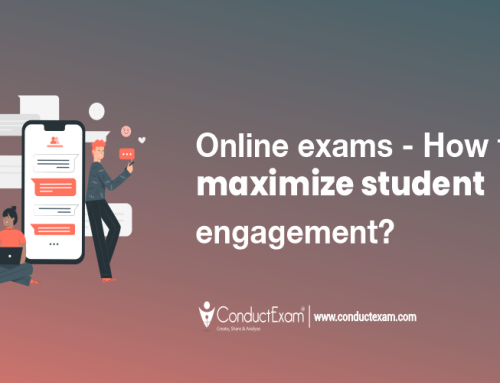Talking about the recent trends in the teaching and learning field, online classes and lectures are the words of every mouth. In layman’s language, online education means sitting online for a few hours, watching the screen, and listening to what the instructor has to say, anywhere you want to sit. Hence, the concept of conducting lectures online has meant delivering knowledge to learners without any bounded walls or areas.
The trend in the teaching-learning area is increasing day by day and there are no chances that the trend will become standstill as the graph of development and inventions with respect to the online lectures delivering process, is growing exponentially with each passing day, especially in the post-COVID-19 era, where the schools, colleges, coaching institutes are closed and the only mode for delivering content to learners sitting at home Is through the platforms like Zoom, Google Meet, Microsoft Teams, etc.
The trend of online education started with the introduction of distance learning courses, which were offered for the candidates who were opting to learn whilst earning. They used to receive the video lectures or lecture links shared with them through drives or other online storage, and also take the exam online on the provided time and date.
Now, this trend has not only been introduced in the schools but also for the students of kindergarten, due to the present COVID-19 era.
Let’s have a quick discussion on how does this online education system work?
We can categorize the online education system into four parts:
Also read: Institue Can Easily Take Test From Home
1. Purely online delivery of content:
Here, there are no walls to bind the learning process, and starting from enrolling for the course, attending lectures, submitting assignments, taking exams, viewing results, fees payment, etc., all the processes are done online.
2. The mixture of Online as well as Offline Modes:
Here, some part of the process is done online, like delivering lectures, submission, etc. but some part is executed in offline modes, like fees collections, exams, results, etc.
3. Various courses available online:
This system enables the learners to download the content, and they can study at the time and place they want, there are no time limits or deadlines to submit the assignments or complete the courses.
4. Massive Open Online Courses (MOOCs):
These are the courses that are meant to address the huge mass of learners. The content is made available for everyone and anybody can access it anytime they want to.
It depends on the type of the above categorization, how this strategy is implemented. The easiest form of the same, as per my views is access to online tutorials and courses.
Also read: How Online Exam Software Will Be Beneficial For Distance Learning?
Advantages Of Online Education
Discussing the advantages of online exam software, the following is the list of some of the advantages of the same:
1. You can attend the lecture wherever you want to attend. A typical scenario of Work From Home can be implemented here.
2. If the recording of the videos is available, the learners can also rewind the playing video in case they missed out on any instruction the teacher has to give.
3. In case if a student is not comfortable with public speaking and hesitates to communicate with the teacher in the conventional classroom, he can easily convey his message to the teacher through this mode of lectures.
4. Instructors can get much time to prepare a topic, then discuss it with students.
5. Group communication is possible.
6. The period of teaching and learning procedure become flexible if the recorded videos are made accessible.
7. Cost-effective from the students’ view as they only need to pay the tuition fees and do not need to worry about the fees for extra-curricular activities, laboratories, sports, etc.
Role of the Internet in Education:
For education purposes, the internet is widely used in carrying out research work, preparation of lectures, tutorials, etc.
Do you have any doubts about any of the subjects that you are studying now? Is your doubt the silliest thing to share and you are hesitated to share it with others? Do you fear public appearances and are not able to raise your hand and ask for the doubt in front of the whole class? Have you read a dozen hard copies to find the solution to the problem, but are in the same place, clueless? If yes, then there is only one solution to all these questions, and it is Google!
Simply type what you are looking for and you will get thousands of informative pages in a fraction of a second! Hence, enthusiastic learners travel online on google so as to know more about the interests for much long time, hence, just to boost up these activities, online learning is introduced.
This has been proved as an efficient method for attending a class as well as a teaching process and has been implemented to deliver the content during the COVID-19 days. Even if you are living in a remote area, and you are not able to attend the live lectures of the course, you always have the provision to download that particular lecture from the portal, as there is functionality in the software that live lectures can be recorded for the learners to access whenever they want to. Hence, you don’t need to worry about the content being missed due to poor network connectivity.
Teachers can make the maximum use of teaching tools like PowerPoint presentations, animations, documents, external videos, graphics, etc., to demonstrate the topics that are covered in the syllabus.
Quiz, multiple-choice questions, one- to- one communication, or in the group, etc. are also possible to conduct using these tools as a part of continuous assessment of learners’ growth along with their knowledge.
Wrapping Up
Concluding our discussion, the online system of education and the internet has helped remove all the barriers of education like sitting at one place for hours and studying, traveling long distances to reach the institutions, paying extra fees for the amenities the student might not even use, etc. Learners and Instructors have become freebies to attend the classes or conduct the classes when and wherever possible. We can conclude that a new decade in the teaching-learning field has arisen in the form of online education.






Leave A Comment